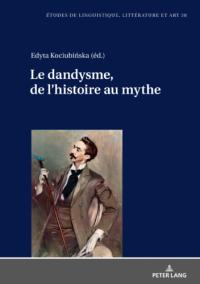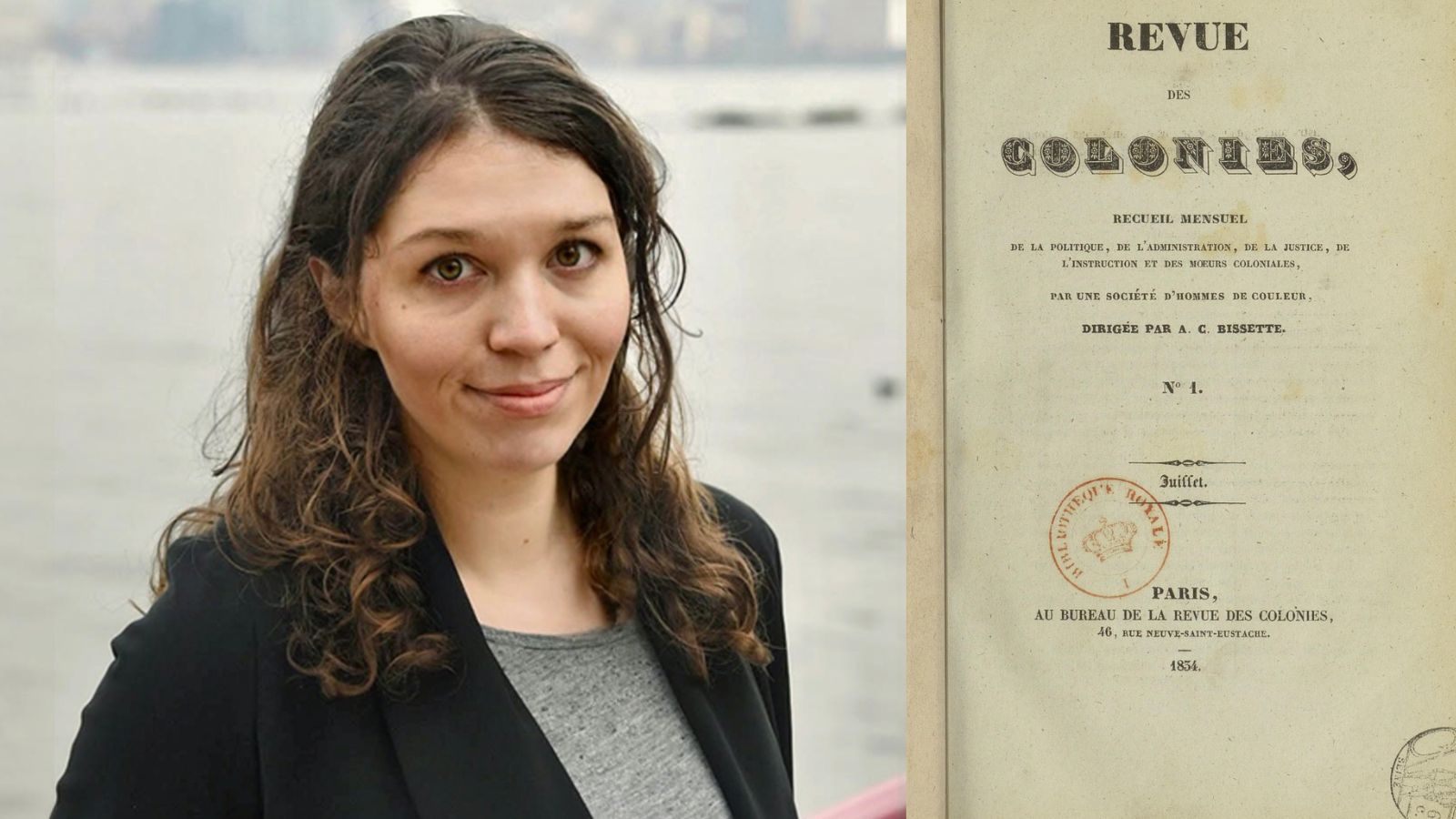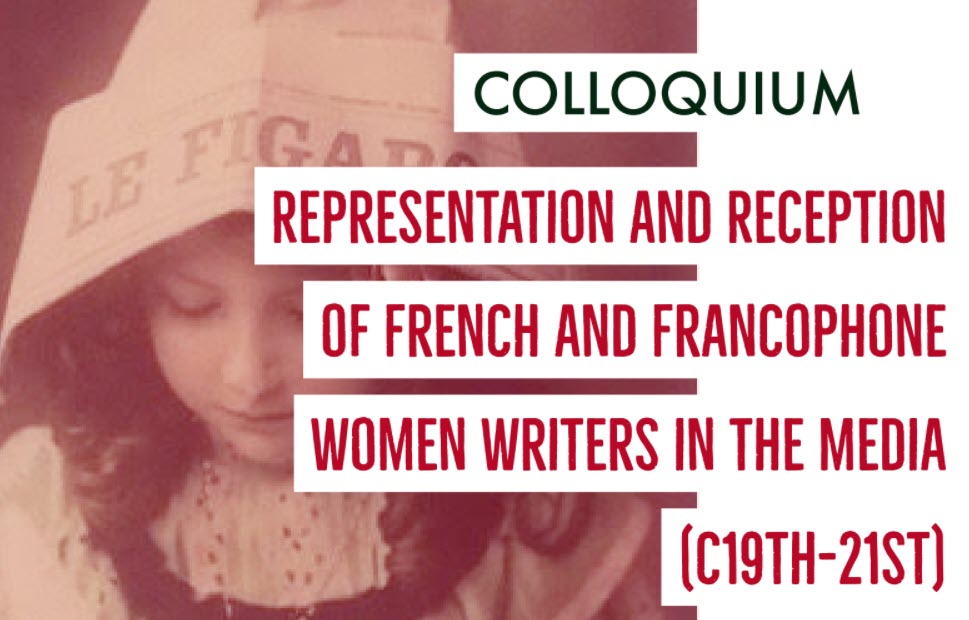Maria Beliaeva Solomon

School of Languages, Literatures, and Cultures
Assistant Professor, French and Francophone Studies, French
Affiliate Faculty, The Harriet Tubman Department of Women, Gender, and Sexuality Studies
Affiliate Faculty, Maryland Institute for Technology in the Humanities
3106 Jiménez Hall
Get Directions
Research Expertise
19th Century
Caribbean
Comparative Literature
French and Francophone Studies
Textual and Digital Studies
Transatlantic Studies
Maria Beliaeva Solomon received her PhD in French Literature, Thought and Culture from New York University (2019) after completing graduate work in Comparative Literature (M.A., Rutgers University, 2013). She is a specialist of nineteenth-century French and Francophone literature and media, focusing on questions of influence, translation, and circulation.
Her first book project considers the popularity of so-called "frenetic" literature in 1830s France in light of contemporaneous transformations in media and print culture, with special attention to sensationalized representations of racial and gendered violence. Material from this project has been published in collected volumes and peer-reviewed journals such as Romantisme, Revue Nerval, L'Année balzacienne, French Forum and Dix-Neuf.
Building on her work for this first book, Dr. Beliaeva Solomon’s current research seeks to outline the complex connections between modern media, racial and colonial identities, and literary traditions, both within the French empire and transnationally, highlighting the rich exchanges between French- and English-language abolitionist periodicals in the lead up to the French abolition of slavery of 1848.
She is Project Director of The Revue des Colonies: A Digital Scholarly Edition and Translation, a collaborative digital humanities endeavor aiming to provide a complete, critically annotated transcription and English translation of the entire print run of the first French periodical directed by people of color. In this capacity, she leads an international and interdisciplinary team of scholars who situate the journal’s emancipatory rhetoric within the political, material, and cultural contexts of its publication.
Research related to the project has been published in Cahiers Alexandre Dumas, Romantisme, Nineteenth-Century French Studies, Outre-Mers, and Scholarly Editing.
The project was featured in a Samedi Magazine radio interview on February 22, 2025, as part of a Black History Month episode highlighting Afrodiasporic intellectual and cultural contributions.
This work has been supported by a planning grant from the Andrew W. Mellon Foundation and the National Historical Publications and Records Commission (NHPRC), as well as by the American Council of Learned Societies, the NYPL Schomburg Center for Research in Black Culture, the Fondation pour la Mémoire de l'Esclavage (the Foundation for the Remebrance of Slavery), the Bibliographical Society of America, the College of Arts and Humanities and the Graduate School at the University of Maryland.
Most recently, she organized the international colloquium The Revue des Colonies: Diasporic Networks and the Struggle for Abolition, held simultaneously at the Archives nationales d’outre-mer (ANOM) in Aix-en-Provence and the Archives territoriales de Martinique (ATM) in Fort-de-France. This event marked the launch of the traveling exhibition The Revue des Colonies: Diaspora + Abolition, which will travel from Aix-en-Provence (February 2025) to Fort-de-France (May 2026).
She is especially interested in considering media and cultural history alongside questions of marginality and stigma, both within the nineteenth century and transhistorically, serving, in 2021, as co-organizer of an international colloquium on the Representations and Reception of French and Francophone Women Writers in the Media (19th-21st centuries).
She is an affiliate member of the Research Center for XIXth Century Studies at the Université de Paris.
Publications
Georges, "roman mulâtre", au prisme de la presse abolitionniste
Dumas, Georges, roman, mulâtre, couleur, esclavage, abolitionnisme
Author/Lead: Maria Beliaeva…Cet article envisage Georges, le seul roman dumasien à s’intéresser au statut contesté des personnes de couleur en situation coloniale esclavagiste, à la lumière des discours émancipateurs circulant à l’époque de sa rédaction, notamment dans la presse antiesclavagiste française. Il se propose d’interroger, ce faisant, les enjeux du roman de Dumas et le rapport de celui-ci à la pensée et à l’écriture abolitionniste.
This article considers Georges, the only novel by Dumas to address the contested status of people of color in the context of colonial slavery, in light of the emancipatory discourses circulating at the time of its writing, especially in the French antislavery press. In doing so, it aims to examine the stakes of Dumas's novel and its relationship to abolitionist thought and writing.
Read More about Georges, "roman mulâtre", au prisme de la presse abolitionniste
Constructions critiques d’un « Balzac 1830 »
Critical constructions of an "1830s Balzac"
Author/Lead: Maria Beliaeva…La présence fantomatique, chez Paul Bénichou, d’un Balzac théoricien du désenchantement invite à étudier la place qu’occupe la crise historique et politique de 1830 dans la critique balzacienne. C’est ce que cet article entreprend en proposant une rétrospective de quelques avatars mémorables de ce Balzac marqué de la « griffe de 1830 »: de l’idéologue déçu décelé par Pierre Barbéris entre les lignes d’un Balzac commentateur social, au prolifique homme de presse analysé par Roland Chollet, en passant par le conteur fantastique étudié par Pierre-Georges Castex, et enfin au Balzac, génial inventeur de lui-même, que révèlent les travaux de José-Luis Diaz. Au vu de ce panorama, c’est autant de perspectives distinctes mais complémentaires sur Balzac 1830 que la critique balzacienne invite à découvrir.
The ghostly presence of a Balzac, theoretician of disenchantment, in the work of Paul Bénichou invites us to examine the legacies of the historical and political crisis of 1830 in Balzac criticism. This article undertakes such an examination through a review of a number of Balzacs marked by the “stamp of 1830”: from the disillusioned ideologue lurking between the lines of his social commentaries, recognized by Pierre Barbéris, to the hyperproductive journalist analysed by Roland Chollet, to the narrator of the fantastic studied by Pierre-Georges Castex, and finally to Balzac, self-mythologizer, as revealed by the works of José-Luis Diaz. This overview invites wider critical consideration of the distinct yet complementary perspectives through which we can understand Balzac as a figure of 1830.
Read More about Constructions critiques d’un « Balzac 1830 »
La Jeune-France au miroir : stratégies de légitimation d’une jeunesse romantique
The "Jeune-France" Reflected : Legitimation Strategies of a Romantic Youth
Author/Lead: Maria Beliaeva…This article considers the literary self-representations produced by the so-called Jeunes-Frances around 1830, interrogating the simultaneous presence of two contradictory imaginaries: that of a Romantic youth and that of a century prematurely aged by commercialism. Several critics have noted the place of youth in the articulation of a generational self-consciousness, but the motif of youth, as taken up in the works of writers such as Borel, Gautier, Nerval, or O’Neddy also offers a means of questioning their marginalization within the literary marketplace and revealing the latter's corruption. The self-portraits these writers produce for their contemporaries thus not only underscore their collective identity, but constitute a novel discourse about youth itself.
Cet article se propose de revenir sur les portraits que les dénommés Jeunes-France donnent d’eux-mêmes autour de 1830 afin d’y étudier la coexistence de deux imaginaires contradictoires : celui d’une jeunesse romantique et d’un jeune siècle, prématurément vieilli par l’avènement des logiques marchandes. Au-delà de l’élaboration, déjà abondamment commentée, d’une conscience générationnelle, l’adhésion au motif de la jeunesse dans la production d’écrivains tels que Borel, Gautier, Nerval ou O’Neddy constitue un moyen inédit de remettre en question leur marginalisation dans les systèmes de légitimation en vigueur afin de mieux en exposer les failles. Les représentations qu’ils renvoient à leurs contemporains contribuent ainsi à façonner, par-delà l’identité collective, un nouveau discours sur la jeunesse.
Read More about La Jeune-France au miroir : stratégies de légitimation d’une jeunesse romantique
Selections from the Revue des Colonies (July 1834, July 1835): From the Prospectus to the Bill for Immediate Abolition
A bilingual annotated edition of selections from Cyrille Bissette's landmark abolitionist journal.
Author/Lead: Maria Beliaeva…This “micro edition,” makes available—in translation and properly contextualized—an invaluable but overlooked resource, comprising a selection of articles from the first issue of the Revue (July 1834) as well as the first issue of the second volume (July 1835), including a “Prospectus” and a “Declaration of Principles," an article criticizing the slave system and the exclusion of “free people of color” from political life of the colonies, as well as a bill for the complete and immediate abolition of slavery. In order to facilitate understanding and best restore the historical and material context of these articles, the digital edition offers several reading modes: articles transcribed in modernized or original spelling, English translation and simultaneous display aimed at facilitating comparative reading.
« L’horrible vrai » des Contes bruns de Balzac
« L'horrible vrai est toujours plus horrible encore ! » s'exclame un personnage d'Une conversation entre onze heures et minuit – conte saturé de violence que Balzac intègre, avec Le Grand d'Espagne, au recueil collectif des Contes bruns, composé à la fave
Author/Lead: Maria Beliaeva…« L'horrible vrai est toujours plus horrible encore ! » s'exclame un personnage d'Une conversation entre onze heures et minuit – conte saturé de violence que Balzac intègre, avec Le Grand d'Espagne, au recueil collectif des Contes bruns, composé à la faveur de la mode frénétique et horrifiante. Ces textes, qui ironisent sur les lois de la littérature marchande tout en y acquiesçant, apportent un éclairage essentiel sur les questionnements que l'écriture balzacienne émet sur elle-même, alors que Balzac s'apprête à abandonner la forme du conte pour le projet, expansif et totalisant, d'une œuvre représentative de la société moderne.
Read More about « L’horrible vrai » des Contes bruns de Balzac
Balzac et Janin, de la connivence à la concurrence
Balzac and Janin: From Complicity to Competition
Author/Lead: Maria Beliaeva…This article reviews the different forms of collaboration that existed between Balzac and Janin, before and after Balzac’s identification, in a famous January 1831 article, of a “school of disenchantment”, which he associated with Janin, Nodier and Stendhal. Beyond this grouping as imagined by Balzac, the latter’s short-lived collusion with Janin reveals the paradoxical nature of the inherently competitive relationship between two young authors who are united in their clever and coordinated manipulation of the new machinery of literary publicity.
Cet article se propose de revenir sur les différentes formes qu’a pu prendre la collaboration entre Balzac et Janin, de part et d’autre de la célèbre théorisation balzacienne de « l’école du désenchantement », par laquelle ce dernier s’associait à Janin, Nodier et Stendhal, en janvier 1831. En-deçà du collectif fantasmé par Balzac, son éphémère collusion avec Janin permet de mettre en lumière la relation paradoxale de deux jeunes auteurs, unis par leur maniement, aussi habile que coordonné, de nouveaux mécanismes de publicité littéraire.
Read More about Balzac et Janin, de la connivence à la concurrence
Loving the Guillotined Woman from Washington Irving to Alexandre Dumas
Revolution, Terror, fantastic, ghosts, decapitation, translation, Dumas
Author/Lead: Maria Beliaeva…Alexandre Dumas' 1848 novella, La Femme au Collier de Velours belongs to a centuries-old lineage of narratives about a young man courting a mysterious woman who conceals a fatal neck wound. Over the first half of the nineteenth century, this narrative template, now featuring a guillotined woman, becomes a relatively popular device for reflecting on the events of the Terror and its lingering presence in the French and wider European cultural imaginary, even and especially for those born too late to actually witness them. In this article, I trace developments and embellishments in the guillotined woman narrative from Washington Irving's "The Adventure of the German Student" (1824) through Dumas' novella. I argue that the self conscious repetition of this narrative both amplifies and ironizes the masculine anxieties it evokes. Through constant recirculation and reanimation, the guillotined woman becomes both a figure for the uncannily restored monarchy and an allegory of degraded cultural production.
Read More about Loving the Guillotined Woman from Washington Irving to Alexandre Dumas
Chiens fidèles, chiens fugueurs : histoire de deux histoires du Roi de Bohême (Nodier)
Mots-clés: formes brèves, roman, nouvelle, conte, réecriture, pastiche, Nodier
Author/Lead: Maria Beliaeva…Cette contribution porte sur une histoire de chiens… Ou plutôt deux histoires, celles que Charles Nodier soumet pour le recueil collectif Nouvelles vieilles et nouvelles qu’il copublie avec Toppfer, le comte de Peyronnet et le baron Dudley en 1843. La première a pour titre « Les Aveugles de Chamouny », et pour sujet les amours de deux jeunes gens rapprochés par une infirmité commune avant d’être séparés par une malencontreuse guérison. Le chien en question, un épagneul nommé Puck, y tient le rôle d’adjuvant et témoigne à son maître un amour et une loyauté exceptionnels puisqu’ils finissent par lui coûter la vie. La seconde histoire, aux accents folkloriques démarqués de Perrault, est intitulée « Histoire du chien de Brisquet », et porte sur le courage d’une chienne qui trouve la mort en sauvant les enfants de son maître de l’attaque d’un loup.
Recovering 19th-Century French Print Culture in the Digital Age
Keywords: digital humanities, graduate coursework, literary history, close reading; collaborative assignments, computational analysis, mass culture, French
Author/Lead: Maria Beliaeva…Contributor(s): Theavy Din, Charlotte Joublot Ferré
Funding Agency:
Presentation at the Language and Literature Program Innovation Room, MLA Annual Convention, Washington DC, January 8, 2022.
Contribution to the digital repository for innovative curricular and pedagogical initiatives in MLA fields: a digital edition of the first seven portraits of the series of "Contemporary Portraits" (1858-1859) published in Le Figaro, a non-political weekly newspaper, by Gabrielle Anna de Cisternes de Coutiras, under the pseudonym Jacques Reynaud. This project, produced in collaboration with Clara Danos, Marie Laverdiere, Michaëlle Vilmont (master's students) and Theavy Din, Charlotte Joublot-Ferré, Madeline Muravchik (doctoral students ), is the outcome of a digital humanities practicum co-taught with Raffaele Viglianti, researcher at the Maryland State Center for Digital Humanities (MITH), as part of the graduate seminar "FREN659: Literature and the Press in the 19th century: a return to the civilization of the newspaper in the digital age" (Fall 2021, University of Maryland).
Où sa main l’entraînait : la hantise du secondaire dans "la Main enchantée"
Mots-clés: Camaraderies romantiques, bousingo, parodie, Nerval et Gautier
Author/Lead: Maria Beliaeva…L’article se penche sur la problématique de la secondarité dans une œuvre considérée comme secondaire dans le corpus nervalien – son premier récit en prose, paru en 1832 sous le titre de « La Main de Gloire, histoire macaronique ». Trace de l’éphémère camaraderie du bousingo, ce conte, où dominent l’autoparodie et la dénégation, laisse deviner un jeune Nerval aux prises avec les préoccupations de sa génération et représentant génial de « l’école du désenchantement ».
Read More about Où sa main l’entraînait : la hantise du secondaire dans "la Main enchantée"
Gilets Rouges : les dandys militants du romantisme français
Keywords: romanticism, rebellion, youth, fashion, performance, journalism.
Author/Lead: Maria Beliaeva…Non-ARHU Contributor(s): Edited By Edyta Kociubińska

The notion of a socially engaged dandyism – let alone a political one – seems to be antithetical to the definition proposed by Charles Baudelaire, that “A Dandy does nothing. Can you imagine a Dandy speaking to the people, except to scoff?” Yet it is from within the inherently political framework of a cultural revolution, undertaken in the first half of the nineteenth century by young adepts of the Romantic movement, that many of the poses and clichés surrounding the figure of the fin-de-siècle dandy originate. Examining the texts that Gautier, Borel, and their peers publish during this period, as well as satirical articles written about them in the press, this essay theorizes the young Romantics’ transgressive self-fashioning in the aftermath of Hernani as a kind of militant dandyism.





